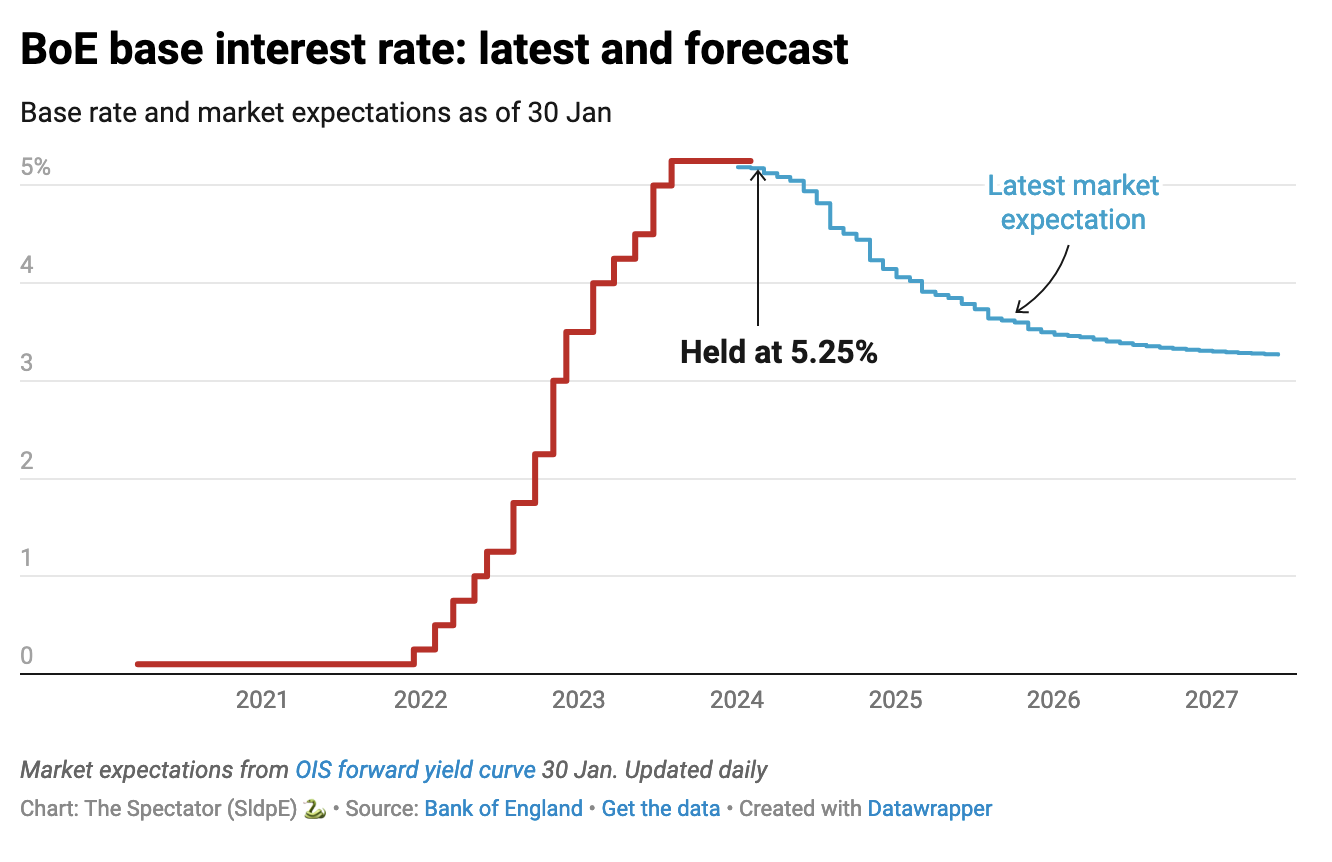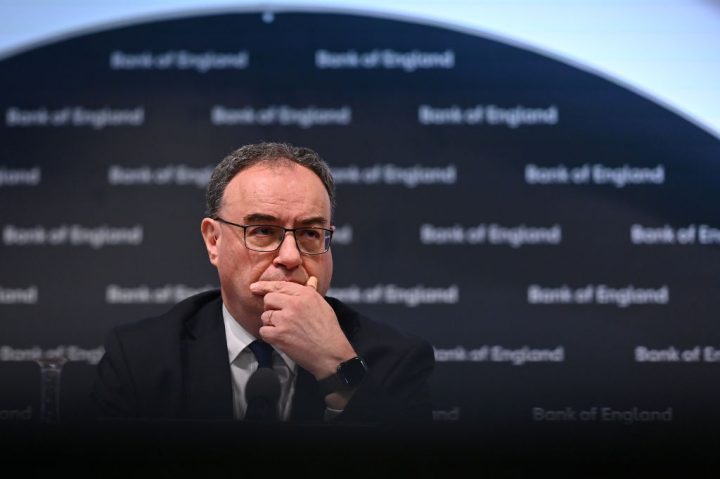The Bank of England (BoE) has held interest rates at 5.25 per cent for the fourth time in a row. This is no big surprise: with inflation ticking back up slightly on the year to December (rising to 4 per cent) – continued trade disruption in the Red Sea last month is expected to have some impact on prices – it was unlikely that the Monetary Policy Committee was going to start a rate-cutting spree so early in the year.

Instead, the hints are in the language used by the Monetary Policy Committee (MPC) in its report.
Already a subscriber? Log in
Subscribe for just $2 a week
Try a month of The Spectator Australia absolutely free and without commitment. Not only that but – if you choose to continue – you’ll pay just $2 a week for your first year.
- Unlimited access to spectator.com.au and app
- The weekly edition on the Spectator Australia app
- Spectator podcasts and newsletters
- Full access to spectator.co.uk
Or




















Comments
Don't miss out
Join the conversation with other Spectator Australia readers. Subscribe to leave a comment.
SUBSCRIBEAlready a subscriber? Log in